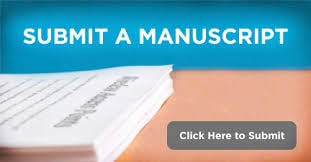The Role of the Business Environment in Improving the Competitiveness of the West Java Traditional Medicine Industry
Abstract
Objectives: This study aims to analyze the role of the business environment in improving the competitiveness of the traditional medicine industry in West Java by identifying business environment factors that affect competitiveness and measuring the significance of the influence of each factor.
Methodology: The research used a mixed method approach with explanatory sequential design. Quantitative data collection was conducted through a structured survey of 222 traditional medicine businesses in West Java selected by stratified random sampling based on business scale and geographical area. Qualitative data were obtained through in-depth interviews and focus group discussions with 18 key informants. Data analysis used multiple regression, structural equation modeling (SEM), and ANOVA, integrated with content analysis for qualitative data.
Finding: The results showed that seven dimensions of the business environment significantly influenced the competitiveness of the traditional medicine industry with a value of R² = 0.613. Market access (β = 0.312) and technology and innovation (β = 0.286) are the most dominant factors, while raw material availability has the highest perception (mean = 3.87). There were significant gaps in technology and innovation (mean = 2.65) and access to finance (mean = 2.78). ANOVA analysis showed significant differences in competitiveness levels based on enterprise scale (F = 18.653, p < 0.01), with larger-scale enterprises showing higher competitiveness.
Conclusion: The business environment plays an important role in improving the competitiveness of the traditional medicine industry in West Java. A holistic approach is needed in developing a conducive business environment, including simplifying regulations, strengthening the innovation ecosystem, developing market access, and special financing schemes to encourage the transformation of the traditional medicine industry towards a more modern and globally competitive industry. An integrated and ecosystem-based industrial development approach is key to improving the competitiveness and sustainability of this industry in the long term.
Keywords
Full Text:
PDFReferences
Amalia, F., & Rosmawati, N. (2021). Strategi pengembangan industri jamu tradisional Indonesia dalam menghadapi masyarakat ekonomi ASEAN. Jurnal Manajemen dan Bisnis Indonesia, 8(1), 56–72.
Barney, J. B., & Hesterly, W. S. (2019). Strategic management and competitive advantage: Concepts and cases (6th ed.). Pearson.
David, F. R., & David, F. R. (2020). Strategic management: A competitive advantage approach, concepts and cases (17th ed.). Pearson.
Dewi, R. K., & Susilowati, I. (2022). Analisis faktor-faktor yang mempengaruhi daya saing industri obat tradisional di Jawa Barat. Jurnal Ekonomi dan Pembangunan Indonesia, 22(2), 187–206.
Hitt, M. A., Ireland, R. D., & Hoskisson, R. E. (2020). Strategic management: Competitiveness & globalization: Concepts and cases (13th ed.). Cengage Learning.
Ismail, T., & Ghina, A. (2020). Peran kebijakan pemerintah dalam pengembangan industri obat tradisional: Studi kasus di Jawa Barat. Jurnal Ilmu Administrasi, 17(1), 81–96.
Kurniawati, D., & Yulianti, F. (2022). Competitive advantage of traditional herbal medicine industry: A case study in West Java. International Journal of Business and Society, 23(1), 435–450.
Mutmainah, S., & Hendrawan, D. (2021). Analisis rantai nilai dan daya saing industri jamu di Jawa Barat. Jurnal Aplikasi Manajemen dan Bisnis, 7(2), 302–315.
Porter, M. E. (2016). Competitive advantage: Creating and sustaining superior performance (2nd ed.). Free Press.
Purnomo, H., & Santoso, I. (2023). Pengembangan klaster industri obat tradisional sebagai strategi peningkatan daya saing: Studi kasus di Kabupaten Kuningan, Jawa Barat. Jurnal Ilmu Manajemen, 16(1), 78–92.
Rahmawati, R., & Wijaya, T. (2021). Peran modal sosial dalam penguatan inovasi industri obat tradisional di Jawa Barat. Jurnal Inovasi Ekonomi, 6(2), 121–136.
Sutrisno, B., & Mardiyati, U. (2022). Analisis SWOT dan strategi pengembangan industri obat herbal di Jawa Barat. Jurnal Manajemen Strategis, 11(2), 159–173.
Wheelen, T. L., & Hunger, J. D. (2018). Strategic management and business policy: Globalization, innovation and sustainability (15th ed.). Pearson.
Wibowo, A., & Supriadi, D. (2021). Peran kebijakan industri dalam pengembangan industri jamu dan obat tradisional di Indonesia. Jurnal Ekonomi dan Kebijakan Publik, 12(1), 15–29.
World Economic Forum. (2019). The global competitiveness report 2019. World Economic Forum.
Yuliana, E., & Kusumastuti, R. (2022). Adopsi teknologi dan inovasi dalam meningkatkan daya saing industri obat tradisional: Studi pada UMKM di Jawa Barat. Jurnal Manajemen Teknologi, 21(2), 178–193.
DOI: http://dx.doi.org/10.22441/jurnal_mix.2025.v15i3.007
Refbacks
- There are currently no refbacks.


.png)



